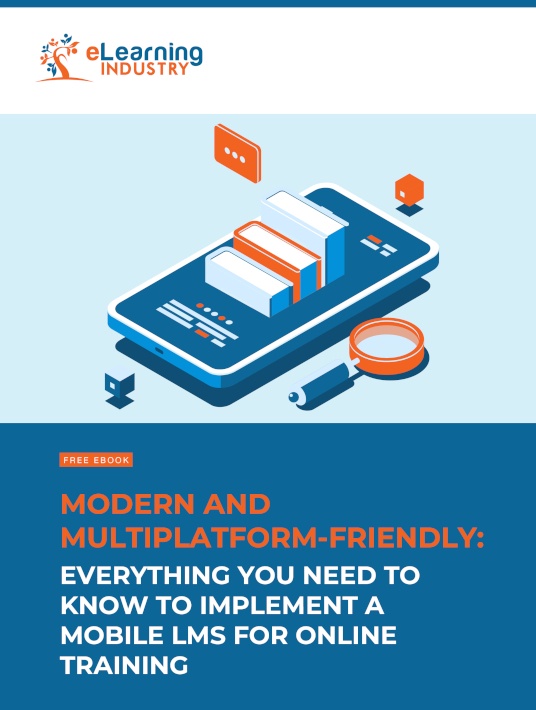What To Look For During Your Mobile Learning Platform Test Drive
For many product or service providers, the dry run is a marketing tool they don’t think about. They make use of it but they don’t realize its full significance. Similarly, many consumers underestimate its importance. After all, it’s free so there’s nothing to lose, right? That may be true but doing your test drive right leaves so much to gain. You can find out if the mobile LMS is a good fit for your team and if its features are really worth the investment. Here’s a checklist you can use to get the most out of your free mobile learning platform demo.

1. User-Friendly Interface
If you’ve been using the internet since it first came online – pun intended – then visuals probably don’t move you. You started out with DOS and raw code so fancy front-end may not be a priority. However, not all of your users will be techies. Actually, most of them will not be. Your non-IT admin and your non-tech trainees need something that’s pretty, smooth, light and easy to use. It needs to function unobtrusively and in no way meddle with the rest of their smartphone apps. Find your most active mobile user. The one that’s surgically attached to their power bank. Have them test the mobile LMS with a focus on user experience. See how it affects their smartphone usage.
2. Matching Skill-Set
How complicated is the LMS and what tech know-how does it require? Java and Javascript may be a completely foreign language to your team of non-IT practitioners. Find out which programming capacity is currently available within your organization. Then, unless you’re ready to hire new mobile programmers, pick a mobile LMS your existing team can work with. If they are unable to maximize functionality during the demo, the trend will probably continue after you invest in the system. Which means that they cannot do their job effectively and you will continue to not use resources to their full extent.
3. Branding Options
It’s important for any mobile learning platform to feel like your own. This means you can program in your logo and brand palette. It also means individual users, both mobile instructors and mobile learners, can tweak their own profiles. It seems like a small matter but it really makes your platform feel like home. That self-developed comfort can encourage users to spend more time on the system. It’s a useful feature if your organization has ongoing training programs. Or even if you plan on selling the mobile course in the future and need to build brand awareness.
4. Social Integration
We use our mobile phones for everything, even email. That said, email is quickly falling out of favor, especially with hires from Gen Y and Z. They prefer to communicate through messaging apps. We may consider this unprofessional. But at this point, we’re outnumbered, so if we can’t beat them, we’d better get with the program. Test how well your mobile LMS integrates with social media platforms. If you’re worried about corporate confidentiality, see if your LMS can build your own intranet messaging unit. Take inspiration from an existing app, not as a form of copyright infringement, but as a homage to evoke familiarity and buy-in.
5. Certification Tools
Completion documents aren’t just about bragging rights. They’re also the clearest measure of when an eLearning course was finished. After all, an online learner might go through all the study materials and then postpone their ‘finals’. Maybe they feel unprepared, or maybe they just forgot. But knowing they won’t get that certificate until they’re done will prompt them to wind up. And completion times are incredibly helpful metrics. The tangible target boosts morale as well. So, check that your mobile learning platform can design ‘diplomas’ and that it can issue them automatically.
6. Compatibility Settings
The software you’re looking to buy needs to align on two levels. One, it needs responsive design capabilities, so you can do a one-off training course for both mobile and desktop. Two, it needs to cut across multiple brands of computers and mobile phones. It must have the capacity to work just as smoothly on Mac, PC, IOS, Android, Symbian, Windows, Linux and so on. If these parameters seem too wide, do an office audit before you start shopping. List every single phone, computer and tablet brand in use. Then check that your mobile LMS fits them all.
7. Support Functions
A mobile learning platform, whether for training or otherwise, allows you to work on the move. But only if they’re well designed. At the office, someone can tap on your shoulder or knock on your door to ask a question. On mobile, you want this same access but without the physical proximity. Check for an in-course chat or an open feedback loop that doesn’t need you to exit the online training course. You don’t want to have to log out and make a phone call when you want assistance.
Customers and buyers don’t always make the most of their free LMS demo. Sometimes, they procrastinate throughout the dry run after which they rush at the last minute. Or they work through it with no clear objective. By the end of the free trial period, they’re no closer to making a purchase decision. Do it right by working off a checklist. Make sure both mobile learners and administrators can use it easily. This covers both technical and novice levels of utility. Check how easy it is to customize and brand, and whether it can be linked to social media. Can it design certificates or stretch across multiple phone brands? Are the support and feedback adequate? If it has all your desired features and suits your budget, then you can go ahead and buy.
What’s the specific benefit of investing in an LMS that has its own mobile app included? What are the advantages of developing an eLearning app with a mobile LMS versus using a mobile-optimized one? Download our eBook Modern And Multiplatform-Friendly: Everything You Need To Know To Implement A Mobile LMS For Online Training to find out how a mobile LMS can help you make your online training program more modern and multiplatform-friendly. It even features tips on how to choose the right custom mobile learning solutions provider and mobile LMS features to look for to boost ROI.

